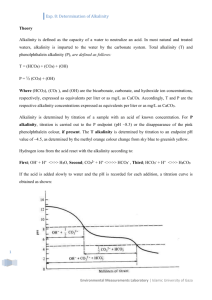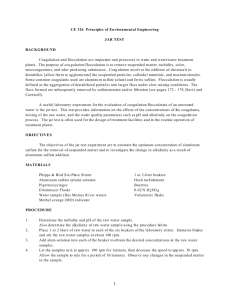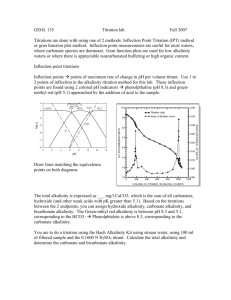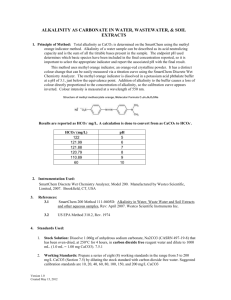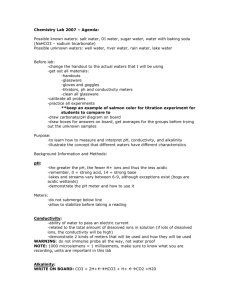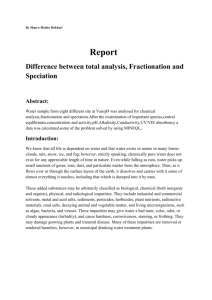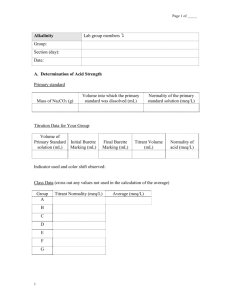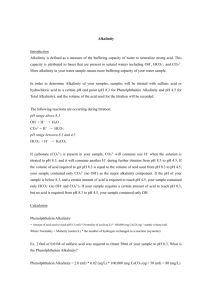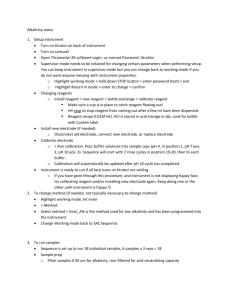Changes in Alkalinity and pH
advertisement
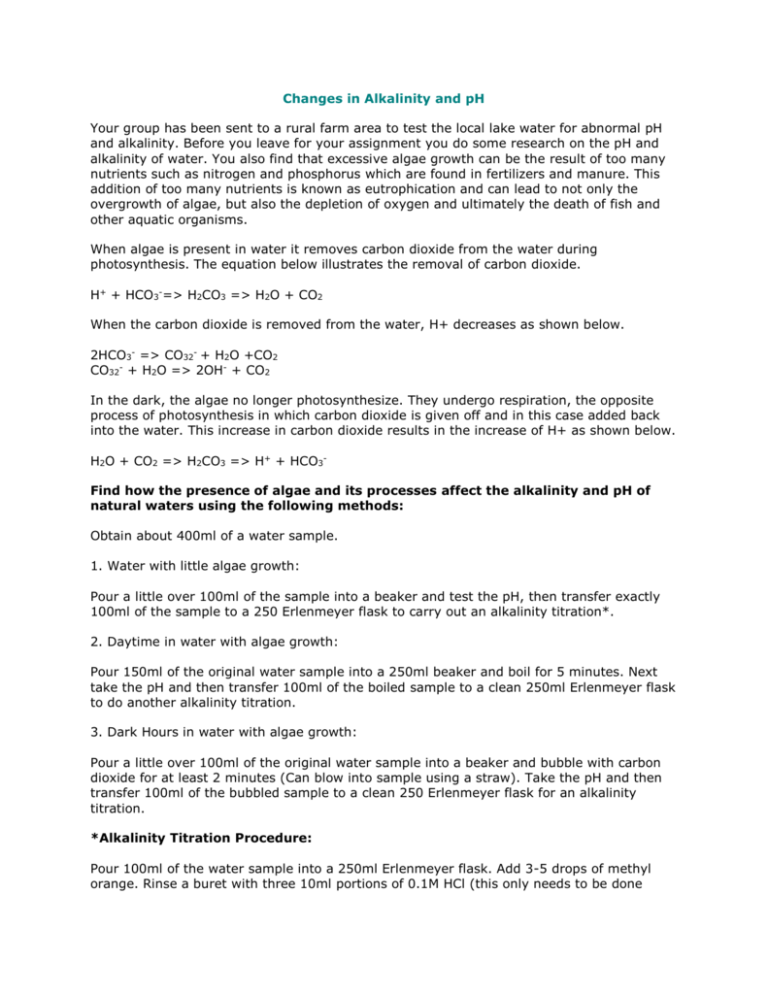
Changes in Alkalinity and pH Your group has been sent to a rural farm area to test the local lake water for abnormal pH and alkalinity. Before you leave for your assignment you do some research on the pH and alkalinity of water. You also find that excessive algae growth can be the result of too many nutrients such as nitrogen and phosphorus which are found in fertilizers and manure. This addition of too many nutrients is known as eutrophication and can lead to not only the overgrowth of algae, but also the depletion of oxygen and ultimately the death of fish and other aquatic organisms. When algae is present in water it removes carbon dioxide from the water during photosynthesis. The equation below illustrates the removal of carbon dioxide. H+ + HCO3-=> H2CO3 => H2O + CO2 When the carbon dioxide is removed from the water, H+ decreases as shown below. 2HCO3- => CO32- + H2O +CO2 CO32- + H2O => 2OH- + CO2 In the dark, the algae no longer photosynthesize. They undergo respiration, the opposite process of photosynthesis in which carbon dioxide is given off and in this case added back into the water. This increase in carbon dioxide results in the increase of H+ as shown below. H2O + CO2 => H2CO3 => H+ + HCO3Find how the presence of algae and its processes affect the alkalinity and pH of natural waters using the following methods: Obtain about 400ml of a water sample. 1. Water with little algae growth: Pour a little over 100ml of the sample into a beaker and test the pH, then transfer exactly 100ml of the sample to a 250 Erlenmeyer flask to carry out an alkalinity titration*. 2. Daytime in water with algae growth: Pour 150ml of the original water sample into a 250ml beaker and boil for 5 minutes. Next take the pH and then transfer 100ml of the boiled sample to a clean 250ml Erlenmeyer flask to do another alkalinity titration. 3. Dark Hours in water with algae growth: Pour a little over 100ml of the original water sample into a beaker and bubble with carbon dioxide for at least 2 minutes (Can blow into sample using a straw). Take the pH and then transfer 100ml of the bubbled sample to a clean 250 Erlenmeyer flask for an alkalinity titration. *Alkalinity Titration Procedure: Pour 100ml of the water sample into a 250ml Erlenmeyer flask. Add 3-5 drops of methyl orange. Rinse a buret with three 10ml portions of 0.1M HCl (this only needs to be done before the first titration). Fill the buret with the acid and record the initial volume. Titrate the sample with the 0.1M HCl to the endpoint (orange to red), and record the final volume. Find the alkalinity of the sample in ppm (mg/L). To find alkalinity use the following equation: [Alkalinity] = [(ml of HCl)(Molarity of HCl)(100.0g/mol)] /[(2)(L of sample)] Pre Lab Questions: 1.What is the difference between alkalinity and pH? 2.How does the concentration of H+ affect the pH? Post Lab Questions: 1. At what time is the alkalinity and pH the greatest, why? 2. At what time is the alkalinity and pH the smallest, why? 3. Why is boiling the sample a good way to simulate the photosynthesis process' effect on water?
